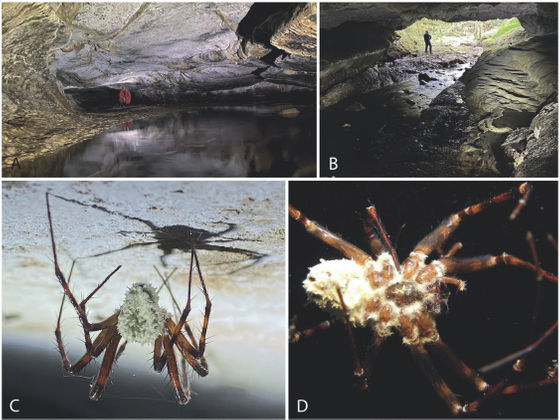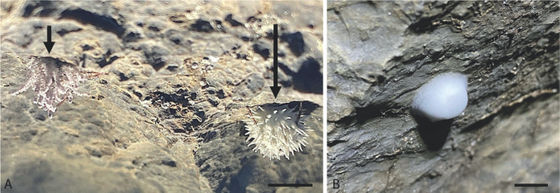New parasitic fungus discovered on cave ceiling that mind-controls spiders and turns them into zombies

by
In nature, there is a parasitic fungus that parasitizes ants, changing their behavior and forcing them to die in places that are convenient for spreading spores, and this was the theme of the popular survival horror game ' The Last of Us ' that was made into a TV drama. Similarly, a new species of fungus has been discovered that parasitizes spiders, which normally hide in the shadows, and guides them to open areas, and this has been published in a paper.
The araneopathogenic genus Gibell...iders (Metainae: Tetragnathidae): Ingenta Connect Fast Track Article
https://www.ingentaconnect.com/content/wfbi/fuse/pre-prints/content-f1_fuse_vol15_art7
'Zombie' spiders infected by never-before-seen fungus discovered on grounds of destroyed Irish castle | Live Science
https://www.livescience.com/animals/spiders/zombie-spiders-infected-by-never-before-seen-fungus-discovered-on-grounds-of-destroyed-irish-castle
Scientists Discover a Fungus Turning Spiders Into Zombies : ScienceAlert
https://www.sciencealert.com/scientists-discover-a-fungus-turning-spiders-into-zombies
The newly discovered fungus is a spider parasitic fungus from the Gibellula genus, and was discovered during the filming of the TV show 'Winterwatch' in Castle Espie, a nature reserve in Ireland.
In 2021, a BBC television crew working at an abandoned powder magazine noticed the mouldy corpse of a spider stuck to the ceiling.

by
Researchers from CAB International, a non-profit organization that received the samples, analyzed the fungus and found that it was a new species that had never been identified before. The researchers named it 'Gibellula attenboroughii' in honor of Sir David Attenborough , a British zoologist and famous narrator of BBC nature programs. The species was originally scheduled to be named 'Gibellula bangbangus' after it was found in a powder magazine.
Cave spiders, such as Meta menardi, which was found victimized by Gibellula attenboroughii, are ambush predators that usually hide in the shadows, waiting patiently for prey, and rarely venture outside their webs.
However, all spiders infected with Gibellula attenboroughii died in open areas of the ceiling or walls.

by
This behavior is very similar to that of ants infected with the Ophiocordyceps fungus found in Brazil's Atlantic rainforest.
'The fact that Gibellula-infected spiders were found in prominent locations, such as the ceiling of their habitat, implies that their behaviour has been altered, likely manipulated by the fungus: exposure of sporulating corpses to air currents circulating within the cave may facilitate the release of dried spores and their subsequent spread throughout the ecosystem,' the researchers wrote in their paper.

by
The fruiting bodies that grow from spider corpses vary widely in appearance, possibly due to environmental factors such as light and wind in the area where they grow.

by Evans et al., Fungal Systematics and Evolution, 2025
According to Harry Evans, lead author of the paper, only 1% of fungi on Earth have been discovered by humans. Gibellula attenboroughii produces antibiotics and mummifies spider corpses to preserve them from decay, and it is expected that some of the antibiotics found in these new molds can be used in medicine.
'The relationship between fungi and spiders is intriguing, but the ultimate goal of this field is to develop antibiotics and other compounds for human medicines,' Evans told Live Science. 'With an estimated 10 to 20 million fungal species yet to be discovered, this represents a gold mine of new medicines.'